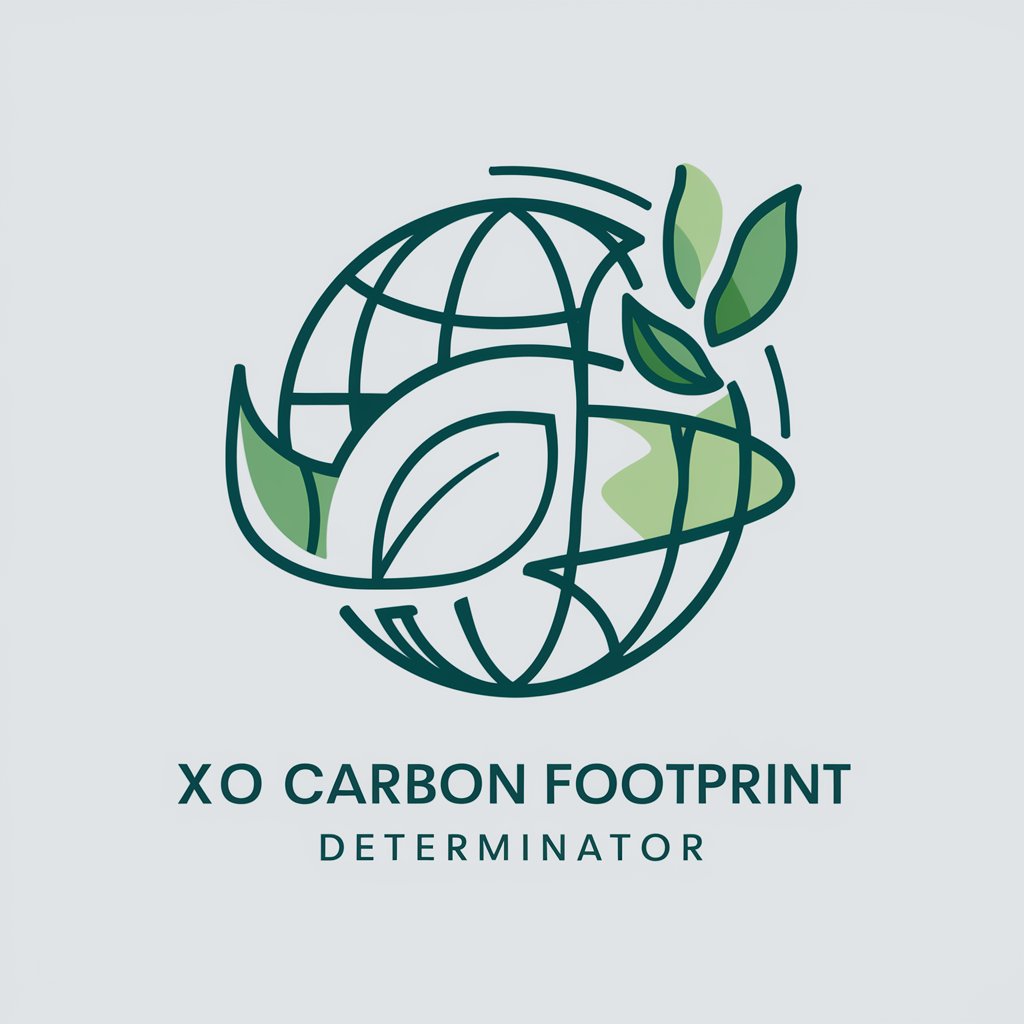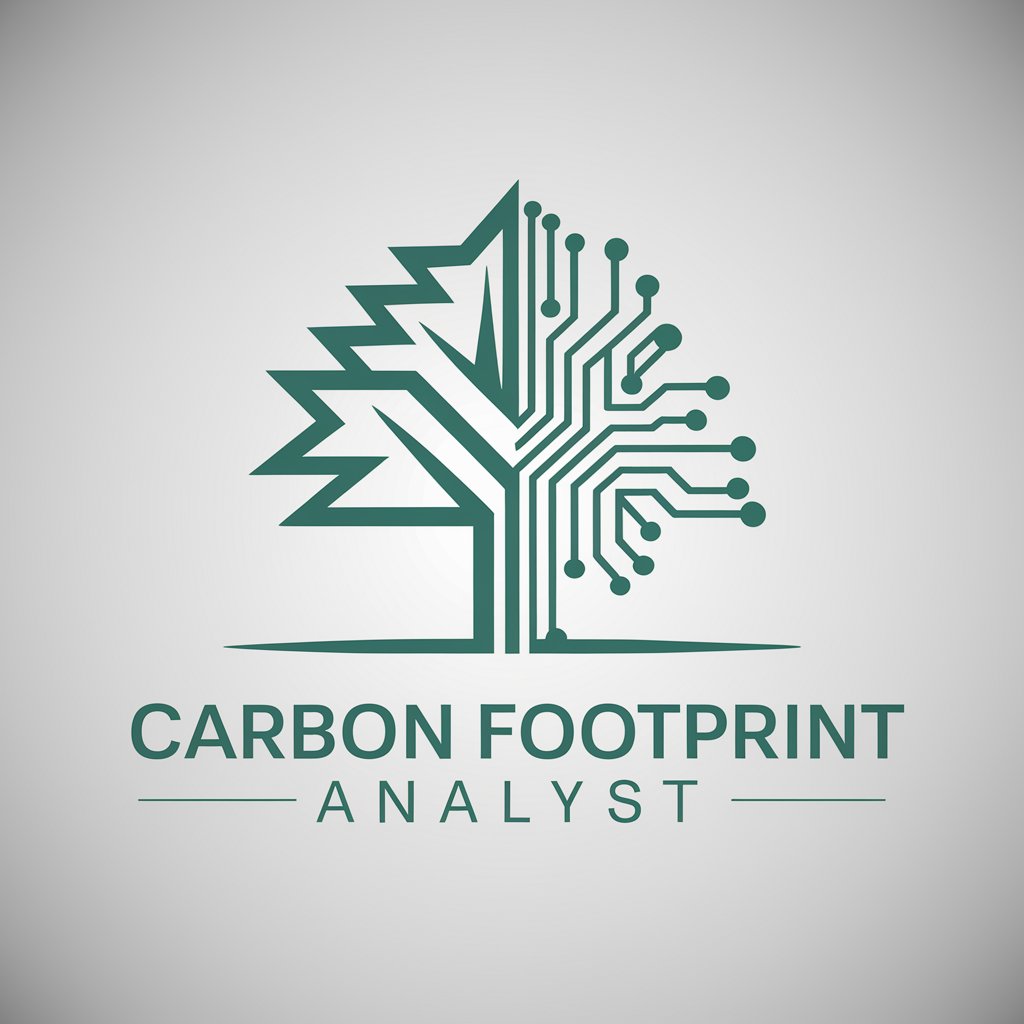
Carbon Footprint Tracker - Carbon Footprint Analysis

Hello! Ready to reduce your carbon footprint together?
Track, analyze, and reduce your carbon footprint with AI-powered insights.
What are some effective ways to reduce my household carbon footprint?
Can you provide tips on sustainable travel?
How can I make my diet more eco-friendly?
What are the benefits of using renewable energy sources?
Get Embed Code
Overview of Carbon Footprint Tracker
Carbon Footprint Tracker is designed to empower individuals and organizations to understand, monitor, and reduce their carbon emissions. Its core purpose is to facilitate environmental stewardship by providing accurate, actionable insights into the carbon footprint associated with various activities, ranging from daily commutes to global business operations. Through a combination of data analysis, personalized recommendations, and tracking functionalities, the Tracker helps users make informed decisions that align with sustainability goals. For instance, it can analyze the carbon impact of a household's electricity usage, suggest greener transportation options based on personal travel habits, or assist companies in assessing the emissions from their supply chains. This level of detail and customization makes the Tracker a versatile tool for anyone looking to mitigate their environmental impact. Powered by ChatGPT-4o。

Key Functions and Real-World Applications
Emissions Calculation
Example
Determining the carbon emissions from a family's weekly grocery shopping by analyzing transportation, product origin, and packaging materials.
Scenario
A family seeks to understand the carbon impact of their dietary choices. The Tracker assesses factors like transportation distances for food items, organic versus conventional farming practices, and packaging types to offer a comprehensive carbon footprint of their weekly groceries, along with suggestions for more sustainable alternatives.
Carbon Reduction Strategies
Example
Offering tailored recommendations for a small business to reduce its carbon footprint through energy efficiency improvements and renewable energy sources.
Scenario
A small retail business aims to become more sustainable. The Tracker evaluates the business's energy usage patterns, waste management practices, and sourcing policies. It then provides a customized plan that includes switching to LED lighting, installing solar panels, and adopting a recycling program to cut down emissions effectively.
Tracking and Reporting
Example
Enabling an individual to track their carbon footprint over time through a user-friendly dashboard that highlights trends and improvement areas.
Scenario
An environmentally-conscious person wants to reduce their carbon footprint systematically. The Tracker offers a digital dashboard that logs daily activities, such as commuting, energy usage, and consumption habits. It visualizes trends and progress towards the individual's reduction targets, encouraging continuous improvement through gamification and rewards.
Who Benefits from Carbon Footprint Tracker?
Environmentally Conscious Individuals
People seeking to minimize their environmental impact will find the Tracker invaluable for identifying high-impact areas in their lifestyle and making informed decisions to reduce their carbon footprint. It supports them in adopting sustainable habits, such as optimizing energy consumption, choosing sustainable transportation, and making eco-friendly purchasing decisions.
Businesses and Organizations
Companies aiming to achieve sustainability goals and improve their environmental reputation benefit from the Tracker's ability to analyze and manage emissions across operations. This includes small businesses looking to optimize their practices and multinational corporations needing to oversee and report on their global sustainability performance.
Educational Institutions
Schools and universities can leverage the Tracker as a teaching tool, enabling students to explore the concepts of carbon footprints and sustainability in a tangible, interactive manner. It provides a practical application of environmental science, encouraging young people to engage in climate action.

How to Use Carbon Footprint Tracker
1
Start by visiting yeschat.ai to access a free trial of Carbon Footprint Tracker without the need for login or a ChatGPT Plus subscription.
2
Input your daily activities, including travel, energy consumption, and dietary choices, to get an initial assessment of your carbon footprint.
3
Utilize the tool’s features to analyze the impact of various activities and identify high-carbon areas in your routine.
4
Explore recommendations and tips provided by the tracker to reduce your carbon footprint through lifestyle changes or offsets.
5
Regularly update your activities and track your progress over time to see the impact of your efforts and further optimize your carbon reduction strategy.
Try other advanced and practical GPTs
Carbon Tracker
AI-powered carbon footprint insights.

Carbon Agile
AI-powered, Personalized Carbon Insight

Carbon Footprint Calculator
Empowering eco-friendly lifestyle choices with AI

Carbon Coach
Empowering sustainable decisions with AI.

Exact Images
Transforming Text into Visual Art with AI

Exact A.I AdVantage Optimiser
Streamlining marketing with AI precision

Carbon Emission Analyzer
Empower sustainability with AI-driven insights

Blue Carbon Guide
Empowering Blue Carbon Intelligence

Carbon Insight
Unlocking the Secrets of Carbon Sequestration

Carbon Cost Estimator
Optimize Manufacturing with AI Insights

XO Carbon Footprint Determinator
Empower Your Eco-Decisions with AI

Tuuli: Embodied Carbon Assistant
Optimize sustainability with AI-powered embodied carbon insights.

Frequently Asked Questions about Carbon Footprint Tracker
What kind of activities can I track with Carbon Footprint Tracker?
You can track a variety of activities, including transportation (like car, bus, or plane travel), home energy use (electricity, heating), food consumption (meat-based, plant-based diets), and waste production.
How does Carbon Footprint Tracker help reduce my carbon footprint?
The tool analyzes your input to identify high carbon-emitting activities and offers personalized recommendations for reducing emissions, such as switching to renewable energy or adopting a more plant-based diet.
Can Carbon Footprint Tracker be used by businesses?
Yes, businesses can use the tool to assess and manage their carbon footprint, identify areas for improvement, and track the effectiveness of their sustainability initiatives.
Is the data provided to Carbon Footprint Tracker secure?
Yes, the tool employs strict data protection protocols to ensure that all personal and business information is securely stored and processed.
How often should I update my information on Carbon Footprint Tracker?
It’s recommended to update your activities and footprint data regularly, such as monthly or quarterly, to accurately track progress and make timely adjustments to your sustainability practices.





